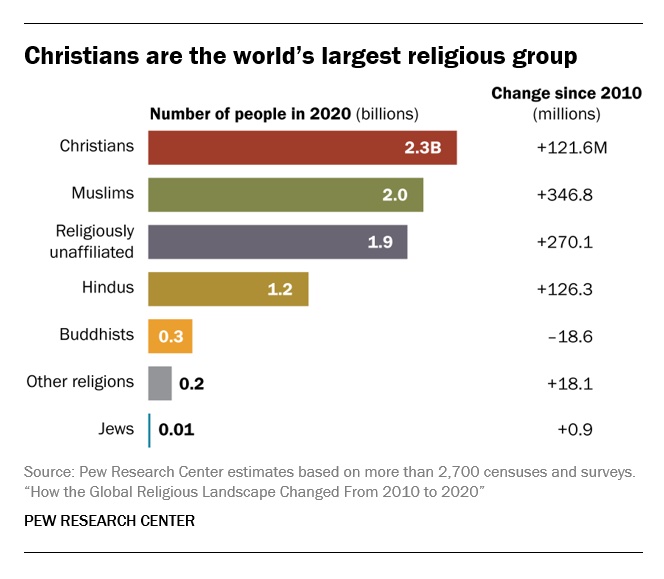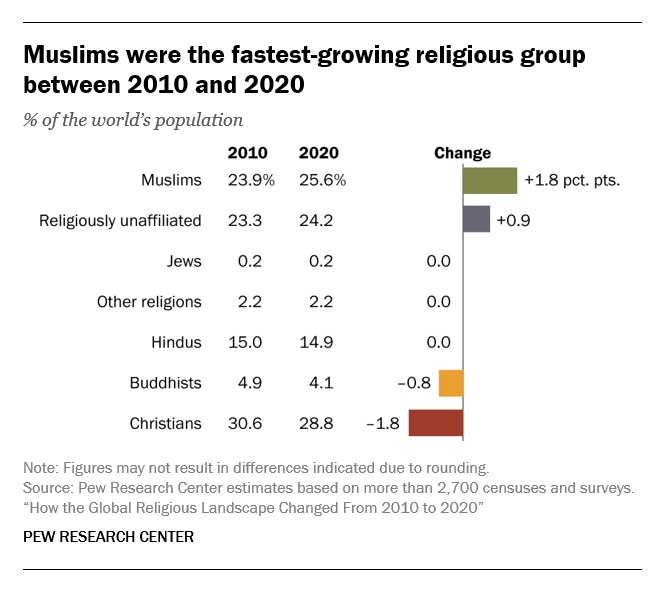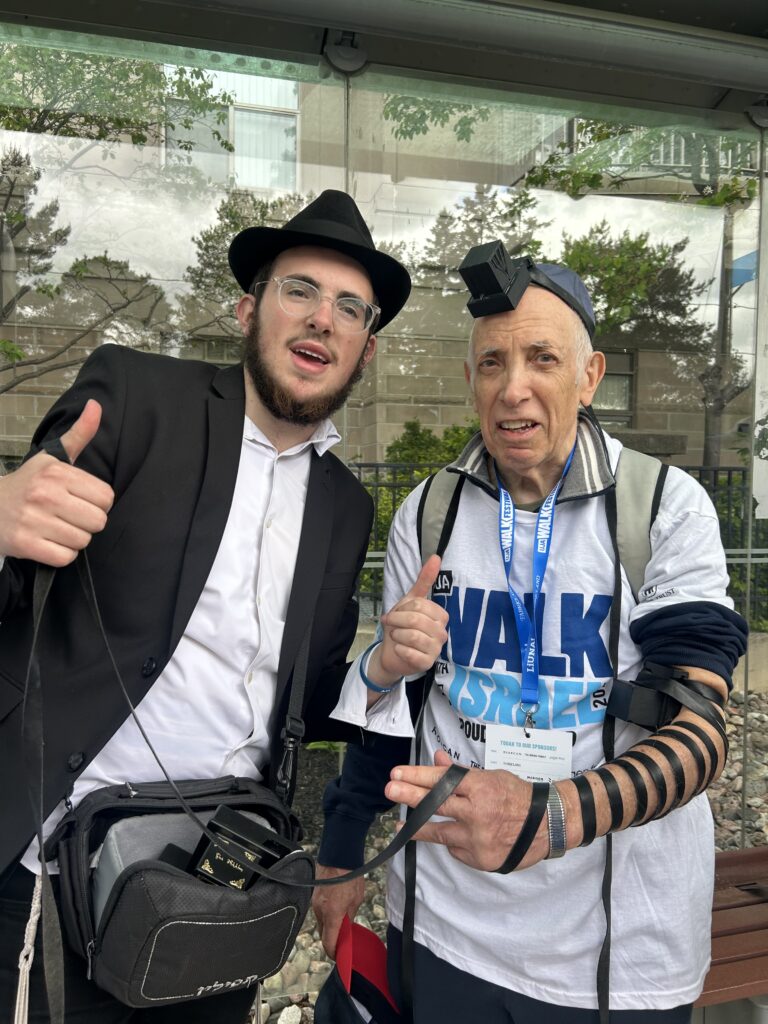Uncategorized
How the Lower East Side has changed since the 1988 rom-com ‘Crossing Delancey’
(New York Jewish Week) — The classic and very Jewish 1988 film “Crossing Delancey” is one of those movies that feels both extremely of its time and also completely timeless.
Director Joan Micklin Silver’s film has all the classic rom-com trappings: A woman who’s torn between two men (and to that end, two worlds); complaints about how hard it is to meet a man in New York City (as true in 1988 as it is in 2022), and a “mother” figure who knows better (here, a Jewish grandmother known as Bubbe, and in this case, she actually does know better). You could pluck all these specifics and drop them into a present-day film — and, if told with the heart and care of “Crossing Delancey,” still have a pretty good movie.
Yet there’s one thing about the “Crossing Delancey” that fully anchors it in the past, and that is its late-1980s Lower East Side setting. While our heroine, Izzy (Amy Irving), lives and works on the Upper West Side, she pays frequent visits to her Bubbe (Yiddish theater actress Reizl Bozyk), her grandmother, downtown. From the moment that Izzy steps off the train at Delancey Street, she’s transported to another world: a bustling Jewish enclave with market-goers shopping for produce, friends and neighbors in the streets kibbitzing and a Hasidic child sitting outside the subway, enjoying a treat from a local bakery.
This dichotomy between the “Old World” of the Lower East Side and the “New World” uptown is the central conflict of the film: Izzy’s inability to reconcile her Jewish roots with her desire to live a secular, intelligentsia lifestyle, as represented by her two love interests (Sam the Pickle Man and Anton, the self-important author).
However, rewatching the film in the present day, I can’t help but wonder: Would Izzy run from the shtetl if she knew that in a few years, it wouldn’t exist anymore? That due to rising rents and a shift in population, many Jewish businesses would meet their end — or, somewhat ironically, be part of the flight to Brooklyn that began in the early-to-mid 2000s? In some ways, 1988 itself was the beginning and the end: It marked the opening of the Lower East Side Tenement Museum, an effort to preserve the neighborhood’s immigrant past, and it was the very same year that Mayor Koch created a new redevelopment proposal for the Seward Park Extension, a canary in the coal mine for the sea change of development the city would see over the next 30 years.
Re-watching the film in 2022, it struck me how the Lower East Side’s bustling Jewish enclave — the same place where my grandparents were born and raised — has since been lost to time, gentrification and re-zoning plans. These days, the neighborhood paints a different picture entirely: giant buildings hog entire city blocks, with construction promising even more sky-high buildings. There’s no specific character to the neighborhood, no story to tell, few places more integral to the city’s fabric than the Delancey-Essex McDonald’s.
Of course, if you’ve lived in the city long enough, you know there’s no getting comfortable. New Yorkers have to, in essence, harden their hearts. We must accept that the local business you love that’s here today very well could be gone tomorrow — even if that business is a Duane Reade. The Lower East Side of today is not the neighborhood of 1988, or 1968 or 1928.
But amongst all of the present-day residential developments, upscale clothing stores and fast food chains, old-school Jewish businesses like The Pickle Guys, Kossar’s Bagels and Bialys and Yonah Schimmel’s Knish Bakery are still thriving. (And, I’d like to think that if you look hard enough, you’ll find some meddling but well-meaning bubbes and yentas, too.)
While we might not be able to fully experience the Lower East Side as the cast and crew of “Crossing Delancey,” here are four places from “Crossing Delancey” that you can still visit, and four that are sadly gone forever.
What Remains Today
Bubbe’s Apartment
154 Broome Street
The interior shots of Bubbe’s apartment, where Izzy fulfills all of her granddaughterly duties, like singing with her grandmother in Yiddish and plucking her chin hairs, were filmed at 154 Broome Street. The 181-unit building sits at the mouth of the Williamsburg Bridge — which is why Bubbe has that spectacular view — and is part of the New York City Housing Authority’s Seward Park Housing Extension. So while you still can visit the exterior of Bubbe’s apartment building today, don’t linger too long — it might weird out the current tenants.
Essex Market
108 Essex Street
This one is a little complicated. The original Essex Market, where Bubbe shows off her Korean-language skills, still stands today. (If you get off at the subway at Delancey Street, you can’t really miss it.) But that iteration of the market closed its doors in 2019 — in order to relocate to a building across the street so big and so glassy it would make Michael Bloomberg blush. In addition to apartments, office space and a movie theater (it’s a truly mixed-use building for our modern times!), Essex Market does boast local, independent vendors, such as Essex Olive & Spice, Porto Rico Importing Co. and Puebla Mexicana food. Per the New York Times, only one of the market’s vendors decided to forgo the move, opting instead for retirement. But you might want to pay a visit to the original Essex Market while you still can — even if only to give it one last look. Following the move, Essex Market initially housed some avant-garde art installations, but it has since seemingly closed its doors for good. According to Gothamist, it’s to be razed to create — what else? — more condos.
Seward Park Handball Court
Essex Street between Grand and Hester Streets
From the moment Sam and Izzy meet, he makes no effort to hide his ardor. In fact, I’d say he uses every weapon in his arsenal to demonstrate his interest — even going so far as to try to impress her with his handball skills when she unexpectedly drops by the court. (You might also clock his CUNY sweatshirt, as I most certainly did.) The handball court is still there, should you decide you want to play a pickup game, but sadly the court’s colorful mural depicted in the film has since been painted over.
Bonus: Gray’s Papaya
2090 Broadway
While this article is focused on the film’s Lower East Side locations, and with good reason, we’d be remiss if we didn’t point out that one important New York institution Izzy visits triumphantly remains: The Upper West Side Gray’s Papaya. There, Izzy celebrates her birthday with a friend and a hot dog — the right way to do it, in my opinion — when a woman bursts in singing “Some Enchanted Evening,” for everyone and no one in particular. It’s one of many of the film’s classic New York moments.
What’s Been Replaced
Steinberg’s Dairy
21 Essex Street
When Izzy emerges from that train at Delancey Street, director Silver takes great care to immerse us in this world. The camera stays on Izzy as she walks from the subway to Bubbe’s apartment, passing a host of local businesses along the way. Among them is Steinberg’s Dairy, which once lived at 21 Essex Street. Steinberg’s Dairy, which also had an Upper West Side location, offered staples like herring, egg salad and vegetarian chopped liver for less than a dollar back in 1941. Today, if you’re in the area, you can grab a drink at the punk rock bar Clockwork, which opened in 2013.
Zelig Blumenthal
13 Essex Street
Izzy also takes us by Zelig’s Blumenthal (also known as Z & A Kol Torah), where three older women sit outside, enjoying the sights and sounds around them. Once a popular Judaica store, it unexpectedly closed its Lower East Side doors in 2010 after 60 years in business. At the time, then-owner Mordechai Blumenthal made the decision to relocate the store to Flatbush due to a dwindling Orthodox population and foot traffic in the area, and a landlord who made clear he “wanted him gone.” It’s unclear if the Flatbush location remains open today, but a vintage clothing store called Country Of has taken up its original spot.
Posner’s Pickles (AKA Guss’ Pickles)
35 Essex Street
Posner’s Pickles, as run by Sam the Pickle Man in the film, was never exactly a real place to begin with. Filming took place at the world-famous Guss’ Pickles, which first opened on Hester Street in 1920, before relocating to Essex Street, where there were once over 80 pickle vendors for locals to choose from. After a stint on Orchard Street, Guss’ Pickles followed in the footsteps of so many others by then, leaving Manhattan to open up shop in Brooklyn’s Dekalb Market in 2017. While Guss’ Pickles is today based out of the Bronx, their delicious pickles are available to order no matter where you are in the country, via Goldbelly. Today, 35 Essex Street is home to Delancey Wine — appropriately named, but doesn’t offer possibilities for a slogan like “a joke and a pickle for only a nickel,” as Posner’s Pickles did in the film.
Schapiro’s Kosher Wines
124 Rivington Street
For 100 years, Schapiro’s Kosher Wines proudly served the Jewish community as the only kosher winery in New York City. It’s where Bubbe chides Izzy for her lack of interest in Sam, and while today the pair couldn’t have this conversation outside Schapiro’s, they could grab brunch at the restaurant Essex. Home to New York City’s “longest-running Brunch Party,” Essex salutes its Lower East Side roots with dishes like potato pancakes and Israeli couscous.
—
The post How the Lower East Side has changed since the 1988 rom-com ‘Crossing Delancey’ appeared first on Jewish Telegraphic Agency.
Uncategorized
How the Global Religious Landscape Changed from 2010 to 2020

Muslims grew fastest; Christians lagged behind global population increase
• Christians are the world’s largest religious group, at 28.8% of the global population. They are a majority everywhere except the Asia-Pacific and Middle East-North Africa regions. Sub-Saharan Africa has surpassed Europe in having the largest number of Christians. But Christians are shrinking as a share of the global population, as millions of Christians “switch” out of religion to become religiously unaffiliated.

• Muslims are the world’s second-largest religious group (25.6% of the world’s population) and the fastest-growing major religion, largely due to Muslims’ relatively young age structure and high fertility rate. They make up the vast majority of the population in the Middle East-North Africa region. In all other regions, Muslims are a religious minority, including in the Asia-Pacific region (which is home to the greatest number of Muslims).

• The religiously unaffiliated population is the world’s third-largest religious category (24.2% of the global population), after Christians and Muslims. Between 2010 and 2020, religiously unaffiliated people grew more than any group except Muslims, despite their demographic disadvantages of an older age structure and relatively low fertility. The unaffiliated made up a majority of the population in 10 countries and territories in 2020, up from seven a decade earlier.
• Hindus are the fourth-largest religious category (14.9% of the world’s population), after Christians, Muslims and religiously unaffiliated people. Most (99%) live in the Asia-Pacific region; 95% of all Hindus live in India alone. Between 2010 and 2020, Hindus remained a stable share of the world’s population because their fertility resembles the global average, and surveys indicate that switching out of or into Hinduism is rare.
• Buddhists (4.1% of the world’s population) are the only group in this report whose number declined worldwide between 2010 and 2020. This was due both to religious disaffiliation among Buddhists in East Asia and to a relatively low birth rate among Buddhists, who tend to live in countries with older populations. Most of the world’s Buddhists (98%) reside in the Asia-Pacific region, the birthplace of Buddhism.
• Jews, the smallest religious group analyzed separately in this report (0.2% of the world’s population), lagged behind global population growth between 2010 and 2020 – despite having fertility rates on par with the global average – due to their older age structure. Most Jews live either in North America (primarily in the United States) or in the Middle East-North Africa region (almost exclusively in Israel).
These are among the key findings of a Pew Research Center analysis of more than 2,700 censuses and surveys, including census data releases that were delayed due to the coronavirus pandemic. This report is part of the Pew-Templeton Global Religious Futures project, which analyzes global religious change and its impact on societies around the world. Funding for the Global Religious Futures project comes from The Pew Charitable Trusts and the John Templeton Foundation.
Uncategorized
Antisemitism in some unlikely places in America

By HENRY SREBRNIK Antisemitism flourishes in a place where few might expect to confront it – medical schools and among doctors. It affects Jews, I think, more emotionally than Judeophobia in other fields.
Medicine has long been a Jewish profession with a history going back centuries. We all know the jokes about “my son – now also my daughter – the doctor.” Physicians take the Hippocratic Oath to heal the sick, regardless of their ethnicity or religion. When we are ill doctors often become the people who save us from debilitating illness and even death. So this is all the more shocking.
Yes, in earlier periods there were medical schools with quotas and hospitals who refused or limited the number of Jews they allowed to be affiliated with them. It’s why we built Jewish hospitals and practices. And of course, we all shudder at the history of Nazi doctors and euthanasia in Germany and in the concentration camps of Europe. But all this – so we thought – was a thing of a dark past. Yet now it has made a comeback, along with many other horrors we assume might never reappear.
Since the Hamas attack on Israel on October 7, 2023, there has been a resurgence of antisemitism, also noticeable in the world of healthcare. This is not just a Canadian issue. Two articles on the Jewish website Tablet, published Nov. 21, 2023, and May 18, 2025, spoke to this problem in American medicine as well, referencing a study by Ian Kingsbury and Jay P. Greene of Do No Harm, a health care advocacy group, based on data amassed by the organization Stop Antisemitism. They identified a wave of open Jew-hatred by medical professionals, medical schools, and professional associations, often driven by foreign-trained doctors importing the Jew-hatred of their native countries, suggesting “that a field entrusted with healing is becoming a licensed purveyor of hatred.”
Activists from Doctors Against Genocide, American Palestinian Women’s Association, and CODEPINK held a demonstration calling for an immediate cease-fire in Gaza at the Hart Senate Office Building in Washington, D.C., Nov. 16, 2023, almost as soon as the war began. A doctor in Tampa took to social media to post a Palestinian flag with the caption “about time!!!” The medical director of a cancer centre in Dearborn, Michigan, posted on social media: “What a beautiful morning. What a beautiful day.” Even in New York, a physician commented on Instagram that “Zionist settlers” got “a taste of their own medicine.” A Boston-based dentist was filmed ripping down posters of Israeli victims and a professor at the University of Pennsylvania Perelman School of Medicine did the same. Almost three-quarters of American medical associations felt the need to speak out on the war in Ukraine but almost three-quarters had nothing to say about the war in Israel.
Antisemitism in academic medical centres is fostering noxious environments which deprive Jewish healthcare professionals of their civil right to work in spaces free from discrimination and hate, according to a study by the Data & Analytics Department of StandWithUs, an international, non-partisan education organization that supports Israel and fights antisemitism.
“Academia today is increasingly cultivating an environment which is hostile to Jews, as well as members of other religious and ethnic groups,” StandWithUs director of data and analytics, and study co-author, Alexandra Fishman, said on May 5 in a press release. “Academic institutions should be upholding the integrity of scholarship, prioritizing civil discourse, rather than allowing bias or personal agendas to guide academic culture.”
The study, “Antisemitism in American Healthcare: The Role of Workplace Environment,” included survey data showing that 62.8 per cent of Jewish healthcare professionals employed by campus-based medical centres reported experiencing antisemitism, a far higher rate than those working in private practice and community hospitals. Fueling the rise in hate, it added, were repeated failures of DEI (diversity, equity, and inclusion) initiatives to educate workers about antisemitism, increasing, the report said, the likelihood of antisemitic activity.
“When administrators and colleagues understand what antisemitism looks like, it clearly correlates with less antisemitism in the workplace,” co-author and Yeshiva University professor Dr. Charles Auerbach reported. “Recognition is a powerful tool — institutions that foster awareness create safer, more inclusive environments for everyone.”
Last December, the Data & Analytics Department also published a study which found that nearly 40 per cent of Jewish American health-care professionals have encountered antisemitism in the workplace, either as witnesses or victims. The study included a survey of 645 Jewish health workers, a substantial number of whom said they were subject to “social and professional isolation.” The problem left more than one quarter of the survey cohort, 26.4 per cent, “feeling unsafe or threatened.”
The official journal of the Alliance for Academic Internal Medicine concurs. According to “The Moral Imperative of Countering Antisemitism in US Medicine – A Way Forward,” by Hedy S. Wald and Steven Roth, published in the October 2024 issue of the American Journal of Medicine, increased antisemitism in the United States has created a hostile learning and practice environment in medical settings. This includes instances of antisemitic behaviour and the use of antisemitic symbols at medical school commencements.
Examples of its impact upon medicine include medical students’ social media postings claiming that Jews wield disproportionate power, antisemitic slogans at the University of California, Los Angeles (UCLA) David Geffen School of Medicine, antisemitic graffiti at the University of California, San Francisco (UCSF) Cancer Centre, Jewish medical students’ exposure to demonization of Israel diatribes and rationalizing terrorism; and faculty, including a professor of medicine at UCSF, posting antisemitic tropes and derogatory comments about Jewish health care professionals. Jewish medical students’ fears of retribution, should they speak out, have been reported. “Our recent unpublished survey of Jewish physicians and trainees demonstrated a twofold increase from 40% to 88% for those who experienced antisemitism prior to vs after October 7,” they stated.
In some schools, Jewish faculty are speaking out. In February, the Jewish Faculty Resilience Group at UCLA accused the institution in an open letter of “ignoring” antisemitism at the School of Medicine, charging that its indifference to the matter “continues to encourage more antisemitism.” It added that discrimination at the medical school has caused demonstrable harm to Jewish students and faculty. Student clubs, it said, are denied recognition for arbitrary reasons; Jewish faculty whose ethnic backgrounds were previously unknown are purged from the payrolls upon being identified as Jews; and anyone who refuses to participate in anti-Zionist events is “intimidated” and pressured.
Given these findings, many American physicians are worried not only as Jewish doctors and professionals, but for Jewish patients who are more than ever concerned with whom they’re meeting. Can we really conceive of a future where you’re not sure if “the doctor will hate you now?”
Henry Srebrnik is a professor of political science at the University of Prince Edward Island.
Uncategorized
The 2025 Toronto Walk (and talk ) for Israel

By GERRY POSNER There are walks and then there are walks. The Toronto UJA Walk for Israel on May 25, 2025 was one of a kind, at least as far as Canada and Jews are concerned. The number of people present was estimated to be 56,000 people or 112,000 total shoes. (How they get to that number is bewildering to me, since there is no one counting). This was 6,000 more than last year. Whether it is true or not, take it from me, it was packed. The synagogues in Canada should be so fortunate to get those numbers in total on High Holidays. The picture here gives you a sense of the size of the crowd.

This was my first walk in Toronto for Israel and I was with my granddaughter, Samantha Pyzer (not to forget her two friends whom she managed to meet at the site, no small feat, even with iPhones as aids). The official proceedings began at 9:00 a.m. and the walk at 10:00 a.m. There was entertainment to begin with, also along the way, and at the finish as well. The finish line this year was the Prosserman Centre or the JCC as it often called. The walk itself was perhaps 4 kilometres – not very long, but the walking was slow, especially at the beginning. There were lots of strollers, even baby carriages, though I did not see any wheelchairs. All ages participated on this walk. I figured, based on what I could see on the faces of people all around me that, although I was not the oldest one on the walk, I bet I made the top 100 – more likely the top 20.
What was a highlight for me was the number of Winnipeggers I met, both past and present. Connecting with them seemed to be much like a fluke. No doubt, I missed la lot of them, but I saw, in no particular order (I could not recall the order if my life depended on it): Alta Sigesmund, (who was, a long time ago, my daughter Amira’s teacher), Marni Samphir, Karla Berbrayer and her husband Dr. Allan Kraut and family. Then, when Samantha and I made it to the end and sat down to eat, I struck up a conversation with a woman unknown to me and as we chatted, she confirmed her former Winnipeg status as a sister-in- law to David Devere, as in Betty Shwemer, the sister of Cecile Devere. I also chanced upon Terri Cherniack, only because I paused for a moment and she spotted me. As we closed in near the finish, I met ( hey were on their way back), Earl and Suzanne Golden and son Matthew, as well as Daniel Glazerman. That stop caused me to lose my granddaughter and her pals. Try finding them amid the noise and size of the crowd – but I pulled it off.

As I was in line to get food, I started chatting with a guy in the vicinity of my age. I dropped the Winnipeg link and the floodgates opened with “ Did I know Jack and Joanie Rusen?” So that was an interesting few minutes. And I was not too terribly surprised to come across some of my Pickleball family. All of these meetings, along with spotting some of my sister’s family and other cousins, were carried on with the sound of the shofar as we moved along the way. In short, this was a happening. Merchants selling a variety of products, many of them Israeli based, were in evidence and, of course, the day could not have ended without the laying of tefillin, aided by Chabad, who have perfected the procedure to take less than a minute. See the photo. Chabad had a willing audience.
Aside from the joy of sharing this experience with my granddaughter, the very presence of all these Jews gathered together for a common reason made this day very special to me. However, there was a downside to the day. The downside was that, as we began to walk back to our car there was no other way I could figure out how to return when the rains came and came. While we walked faster, we were impeded by pouring rain and puddles. But Samantha wanted to persevere, as did I. We made it, but were drenched. My runners are still drying out as I write this two days later.
What with being surrounded by 56,000 people, the noise, the slow walking, and the rain, I can still say the day was a real highlight for me – one of the better moments since our arrival in Toronto in 2012. As well as the photos we took along the way, I have the reminder of the day, courtesy of the UJA, as evidenced from the photo. It was not just the walk, but the talk that accompanied the walk that made it so worthwhile for me. I would do it again, minus the rain.
